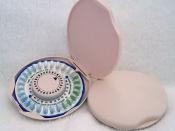A Brief Summary and History of Contraceptive Devices
Contraceptive devices were designed to help prevent pregnancy, not to protect against Sexually Transmitted Diseases. For every method of contraception, there is a failure rate in preventing pregnancy. The only way to protect yourself 100% from pregnancy or STDs is to not have sex. The failure rate could be caused by either the method itself or by human error, such as incorrect use. Each method has possible side effects, some minor, some more serious. Most methods using can be divided into two groups: physical (barrier) methods, and chemical methods.
Barrier methods keep the sperm and the egg apart, and usually have only minor side effects. There are five barrier methods/devices: male condoms, female condoms, sponges, diaphragms, and cervical caps. The male condom is the only contraceptive considered highly effective in helping to protect against STDs. It has a birth control failure rate of about 15%, which is the lowest failure rate of the barrier methods.
Most failures are caused by improper use.
The other four barrier contraceptives are used by the female, and all have a failure rate of about 20%. The female condom, like the male, catches the male's semen. However, the diaphragm, cervical cap, and sponge all use spermicides to kill the sperm before they reach the cervix. Spermicides are a chemical method.
Chemical methods prevent either ovulation or the implantation of a fertilized egg into the uterine wall. In general, chemical contraceptives have a lower failure rate than barrier methods; however, they also have no protection whatsoever against STDs. Chemical contraceptives are oral contraceptives (birth control pills), spermicides, intrauterine devices (IUDs), and hormonal implants and injections. Hormonal implants and injections have many side effects. However, they also have failure rates of less than 1%. Spermicides,



Comment
A very interesting and informative essay. It would have been even better if in the last paragraph you provided more details about the methods used in the past.
1 out of 1 people found this comment useful.